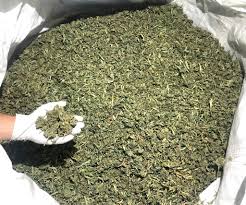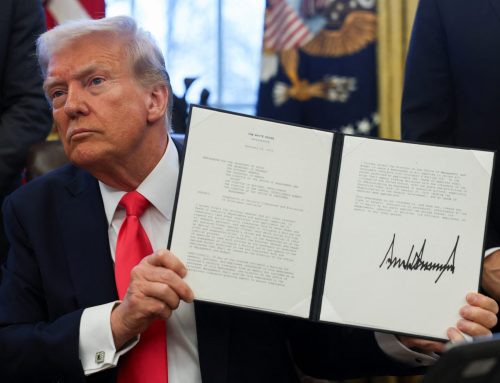Quick Guide: Everything You Need To Know About Hemp Biomass
Everything You Need to Know About Hemp Biomass
Mature, female Cannabis sativa plants consist of many different constituent parts, and not all of these parts are needed to make popular, cannabinoid-rich bulk products like hemp flower and CBD extract. While these leftover components could be thrown away, it’s more sustainable to put the stalks, leaves, and other unwanted parts of hemp plants to good use, which is where hemp biomass comes into the picture. In this guide, we’ll provide you with a thorough description of hemp biomass, explain this hemp product’s economic value, and provide some examples of the finished products you can make with hemp biomass.
What is hemp biomass?
Hemp biomass is everything in the hemp plant that isn’t used to make other products. In most cases, only the mature, trimmed flowers of cannabinoid-rich hemp plants are used to make finished products, and the remaining components of Cannabis sativa plants are discarded.
Mature Cannabis sativa, however, consists of much more than just flowers. The fragrant, resinous flowers that this plant produces grow on thick, fibrous stalks and hemp also produces wide, fan-bladed leaves along its branching stalks.
In addition to the large leaves that line hemp’s stalks, this plant also produces smaller, cannabinoid-rich leaves called “sweet leaf” that grow near hemp buds. Sweet leaf is commonly trimmed off hemp buds, but its high cannabinoid content makes sweet leaf one of the most potent components of hemp biomass.
Once CBD-rich hemp buds have been harvested and cut from their stalks, they go through an additional trimming process that removes unsightly leaves from the surfaces of the buds. Since this trim is not included in CBD flower, it is added to biomass instead.
How is hemp biomass produced?
The first step in producing hemp biomass is drying each of the leftover hemp plant components we listed above. In some cases, these components are dried together, but they’re often dried separately.
Once the discarded leaves and stalks of mature hemp plants have been dried, they are combined, and they often go through a shredding process to render large leaves and stalks into smaller pieces that are easier to package by the kilo.
At this point, CBD biomass is now ready for sale in bulk quantities. Once trim, sweet leaf, fan leaves, and stalks have been mixed together, the resulting blend usually contains around 10% CBD.
What is fiber biomass?
The term “biomass” is used throughout the agricultural industry to refer to any parts of plant products that are not used for food or other primary purposes. Since high-CBD hemp plants are bred and cultivated to be high in cannabidiol, biomass from these plants is usually used to make affordable CBD extracts. Alternatively, however, leftover hemp material can be harvested for its fibers, which are useful from a variety of industrial perspectives.
Called “fiber biomass,” this type of biomass does not contain very much CBD, so if it is made from CBD-rich hemp, it usually does not contain any sweet leaf or trim and is made exclusively from stalks or leaves instead. The vast majority of fiber biomass, however, is not made from CBD-rich hemp at all, and instead, it is made from low-cannabinoid hemp strains that are cultivated for their seeds, which have nutritional and cosmetic benefits.
Alternative definitions of hemp biomass
Hemp cultivators who produce low-CBD hemp outdoors in massive quantities commonly refer to the total weight produced by hemp crops as “biomass.” In this context, biomass also refers to the mature, CBD-rich flowers produced by hemp plants. Producers of indoor, artisan CBD flower, however, use the term “biomass” to refer exclusively to the non-flower byproducts that are created during high-CBD hemp flower production.
How much is hemp biomass worth?
When produced for its CBD content, hemp biomass is generally valued based on the amount of CBD it contains. Hemp biomass that contains 12% CBD, for instance, will usually be priced significantly higher than hemp biomass that contains 5% CBD.
This variance in CBD content can occur due to multiple factors. First, the total CBD content of the plant from which the biomass is derived plays a role. If a hemp plant produces CBD-rich flowers that contain 20% cannabidiol, for instance, the biomass derived from that plant will contain more CBD than, say, a plant that produces flowers with 10% CBD.
In addition, CBD biomass is often offered in a variety of grades. High-grade CBD biomass, for instance, might be made with more bud trim and fewer stalks while low-grade CBD biomass may be made with more stalks and leaves. Since it uses parts of CBD-rich hemp plants that contain more cannabidiol, high-grade CBD biomass will naturally be higher in CBD and sell at a higher price than low-grade biomass made with low-yielding parts of the plant.
Further factors that dictate hemp biomass pricing
Furthermore, the price of hemp biomass fluctuates based on current market trends. Throughout the 2019 cultivation season, for instance, an unprecedented number of farmers switched to hemp from other crops due to the changes in CBD legislation resulting from the 2018 Farm Bill. As a result, the market became flooded with high quantities of hemp biomass, which pushed prices lower.
The vast majority of CBD biomass on the market, however, is low-quality. Most first-time hemp farmers don’t know how to avoid contamination and produce high-end biomass, and they may commit other errors that don’t comply with the industry standard.
Producers of high-end CBD flower, however, have the experience and equipment necessary to produce high-end CBD biomass that transcends the boundaries of the mainstream hemp biomass market. Contaminant-free, high-grade CBD biomass intrinsically has more value than shoddily put-together biomass made by first-time hemp farmers.
Biomass production—how many pounds of hemp biomass per acre?
For producers of low-quality, outdoor-grown hemp, receiving the largest possible return-on-investment (ROI) is usually the top priority. As we mentioned above, outdoor hemp producers who have jumped on the bandwagon during the last few years commonly refer to the entire mature hemp plant as “biomass,” and as a result, they calculate their returns based on the amount of biomass that can be produced per acre.
Estimates vary, but some sources indicate that it’s possible to produce 500-1,500 pounds of hemp biomass per acre. The amount of low-quality hemp biomass that can be produced outdoors, however, varies depending on the area where it is grown and the agricultural processes that are used.
What products can be made from hemp biomass?
CBD-rich hemp biomass is most commonly used to produce CBD extracts. Cannabidiol can be extracted from hemp biomass using a variety of different solvents and methods, and the substance that results from the first phase of extraction, commonly referred to as crude or “winterized” CBD oil, has 30-70% potency.
The potency of winterized CBD oil can be increased via distillation, which removes some undesirable components, or by isolating the CBD molecule and removing all other components. Once CBD oil has been isolated or distilled, it can be made into practically any type of CBD product.
Not all extracts made from CBD biomass are equal, however. The lower the potency of your biomass, for instance, the more likely it is that the extracts you make with it will contain contaminants.
This increased risk of contamination arises both from the inferior processes that are used to cultivate low-potency outdoor hemp and the increased amount of biomass that is needed to produce high-potency extracts. To ensure that the products you make with CBD oil extracted from hemp biomass are high-quality, it’s important to use indoor-grown, high-potency biomass.




































